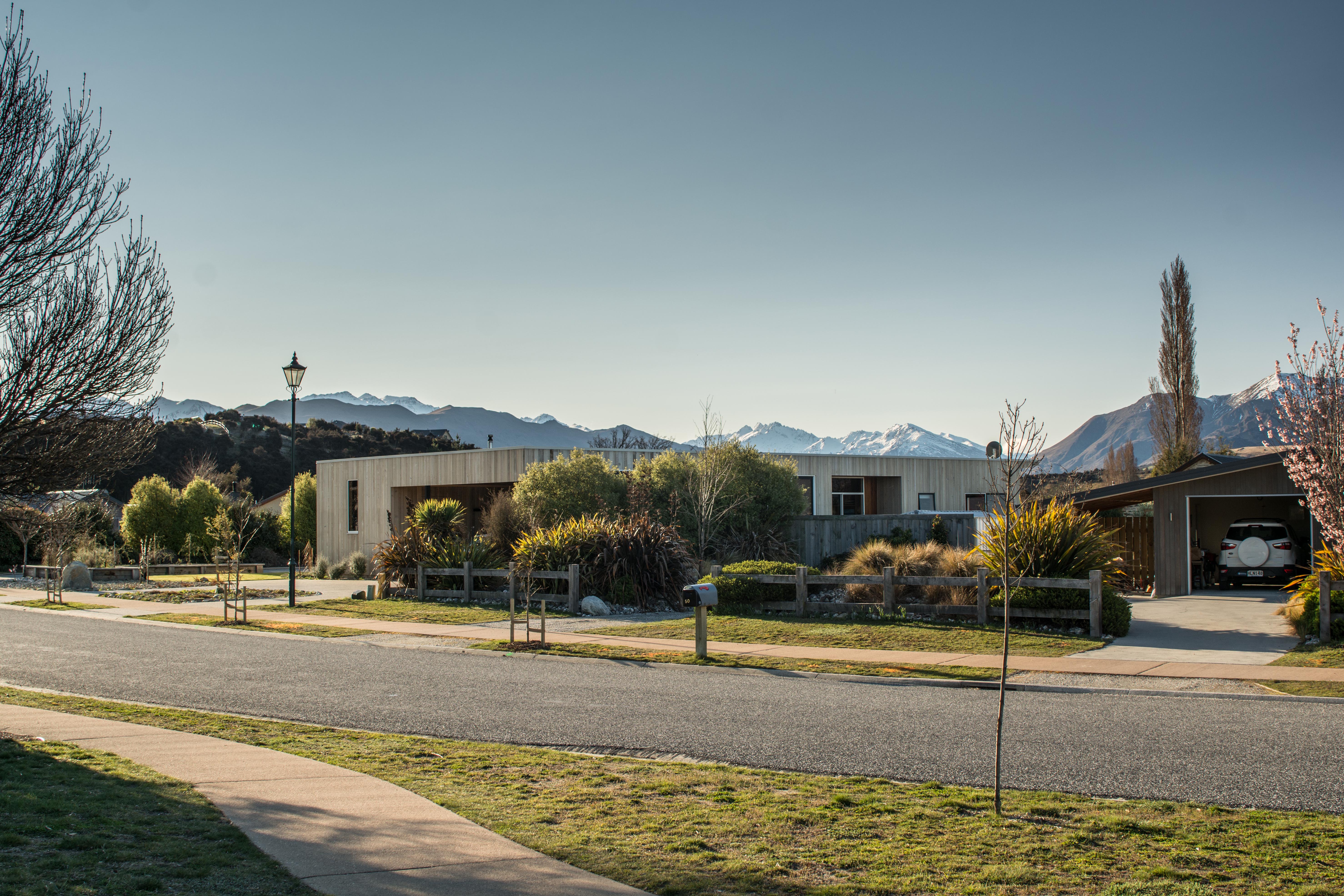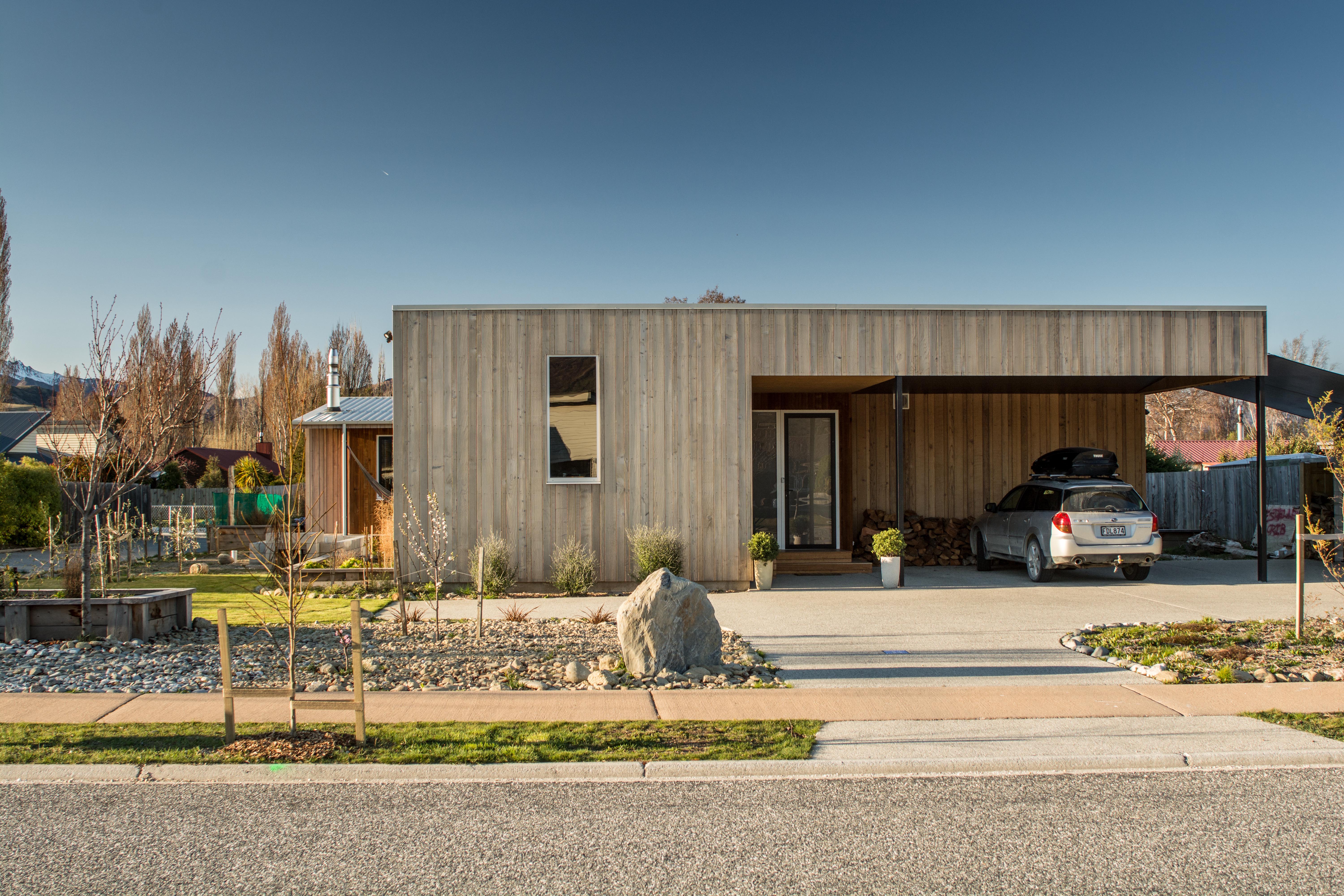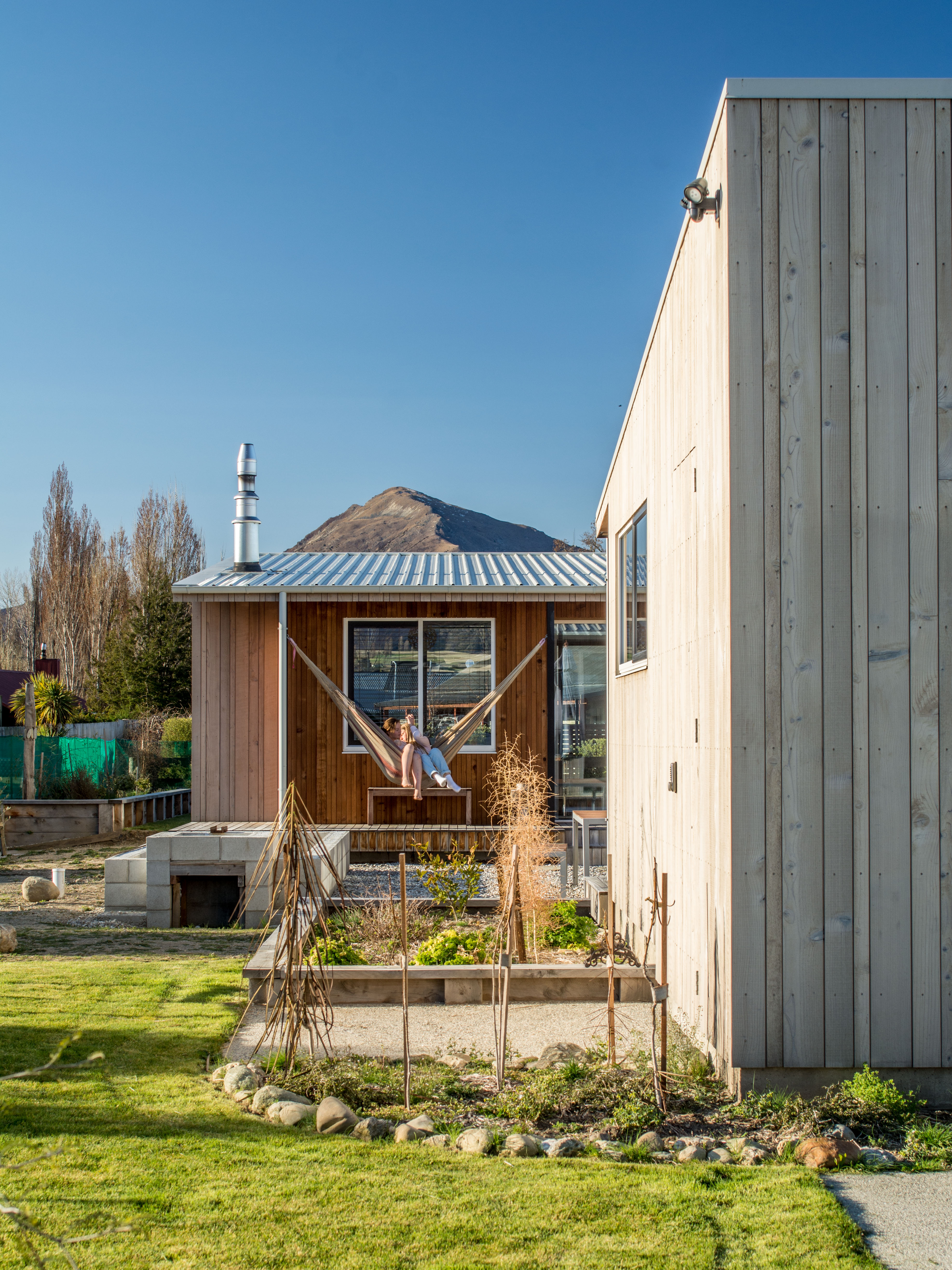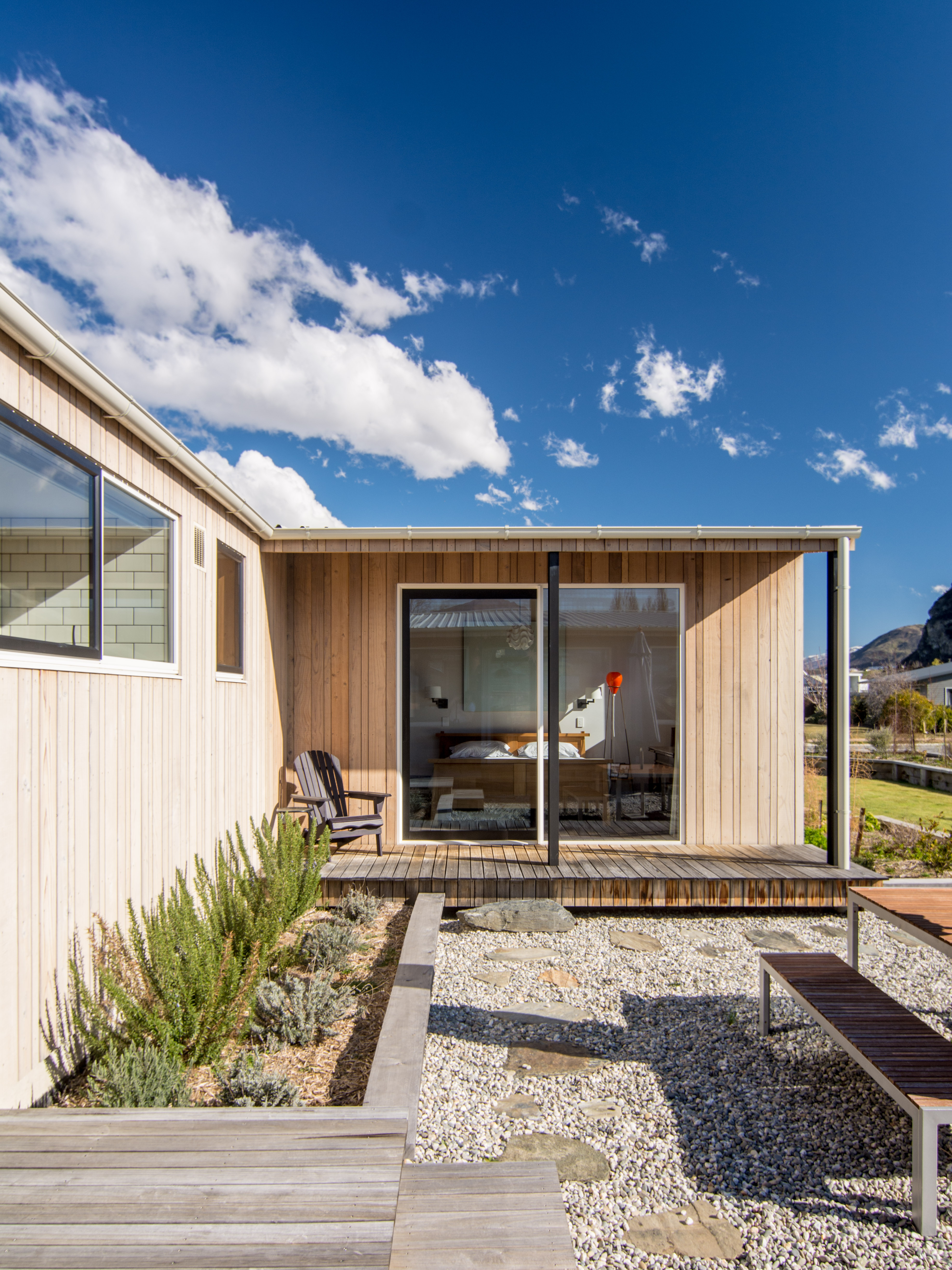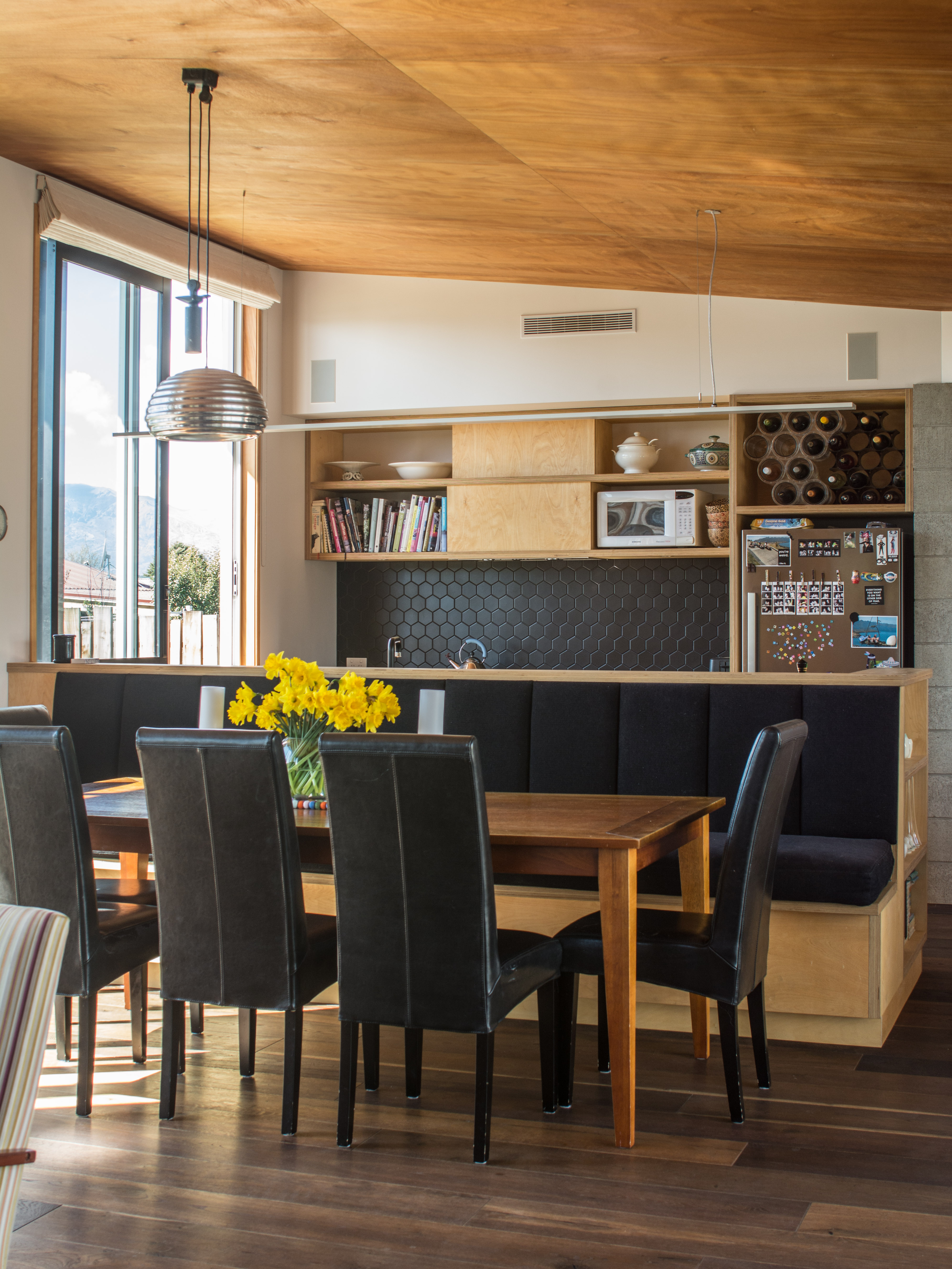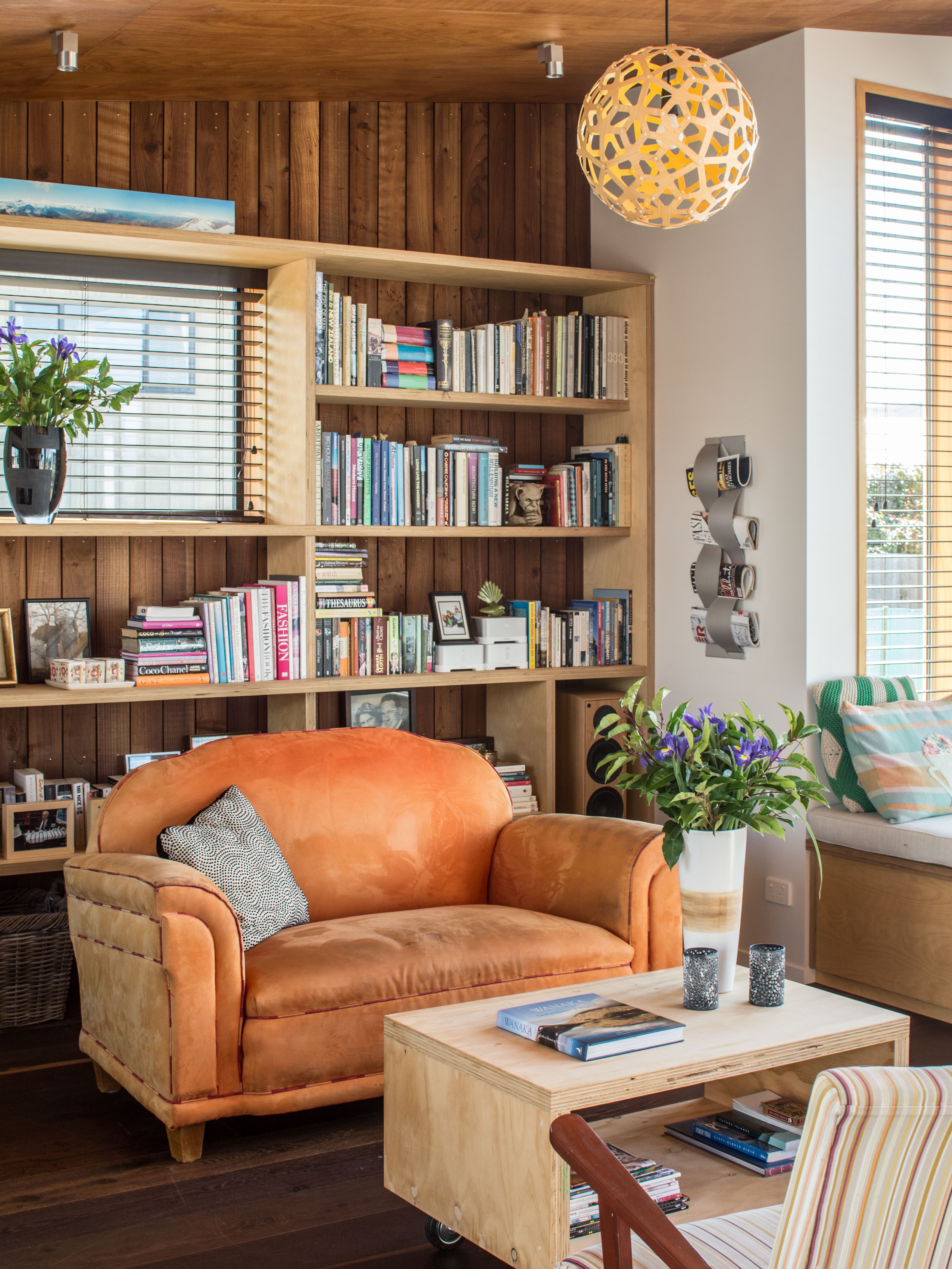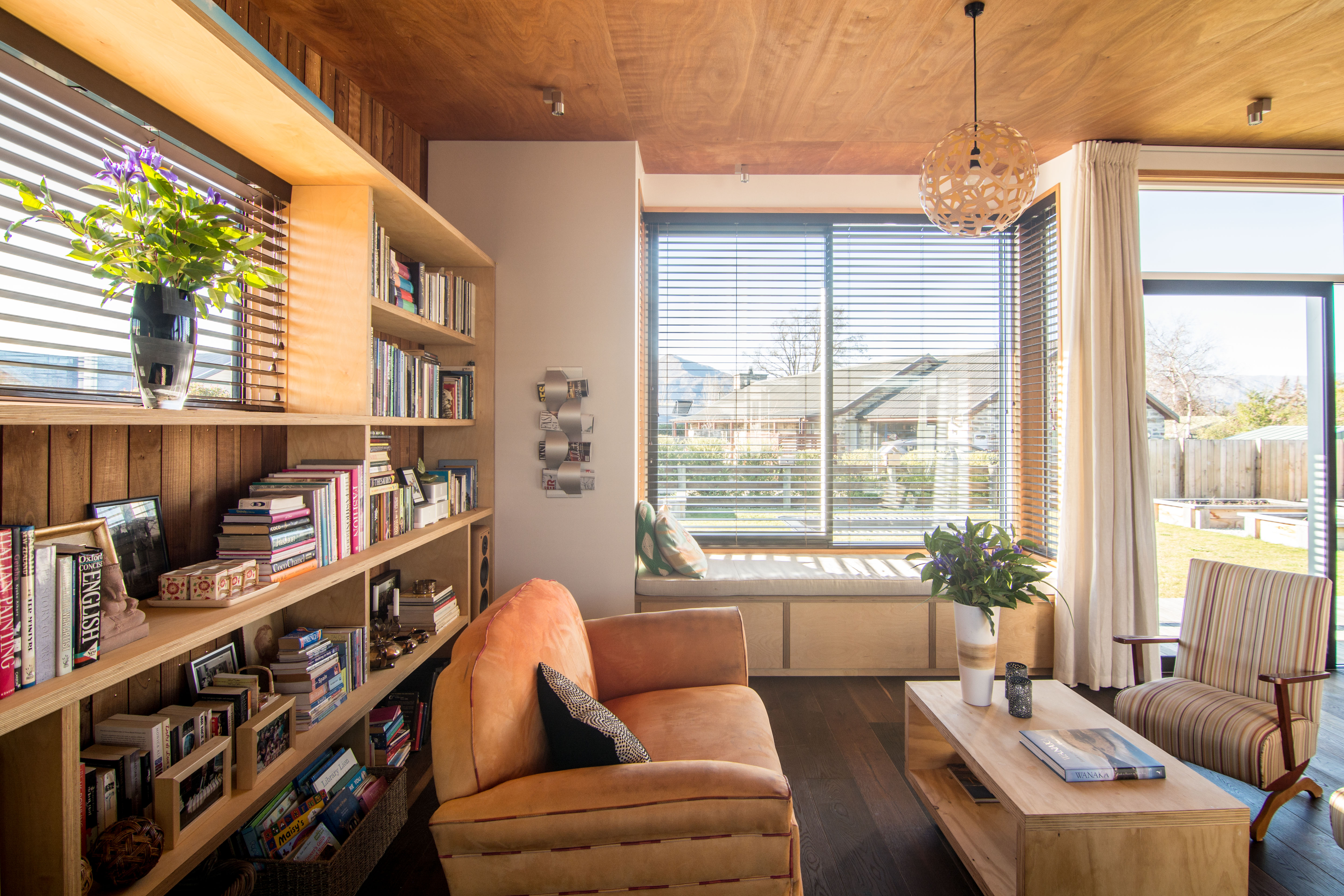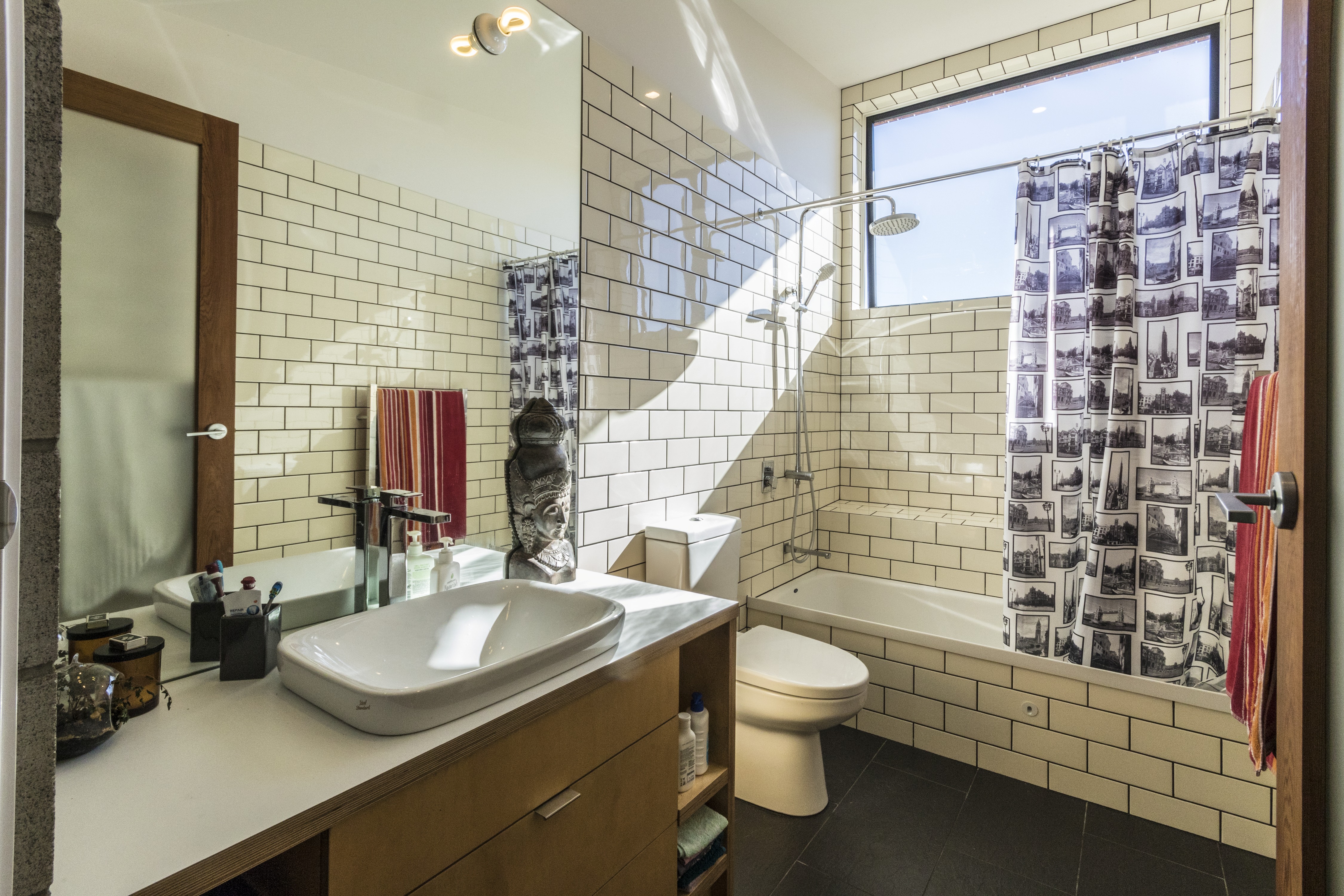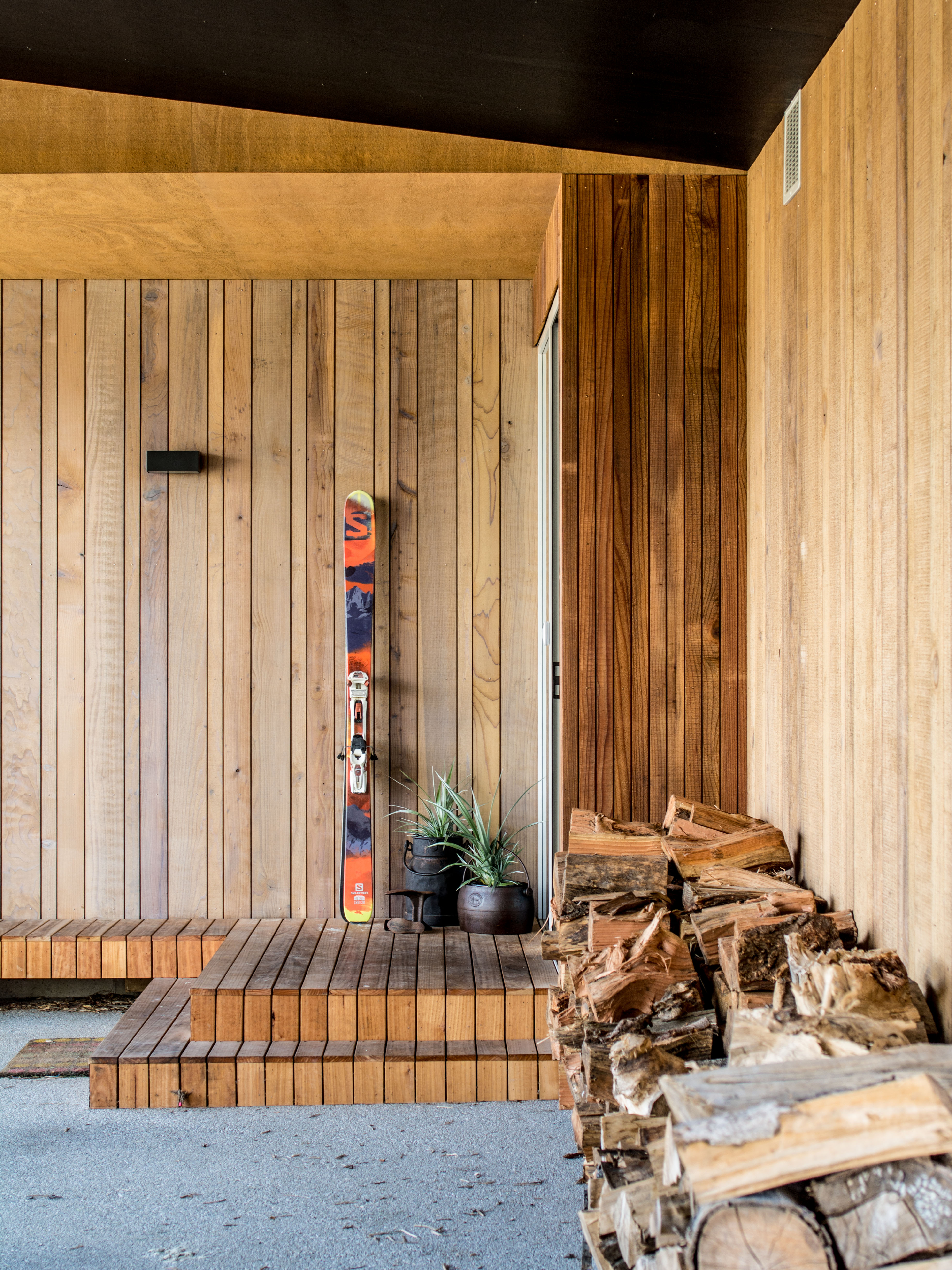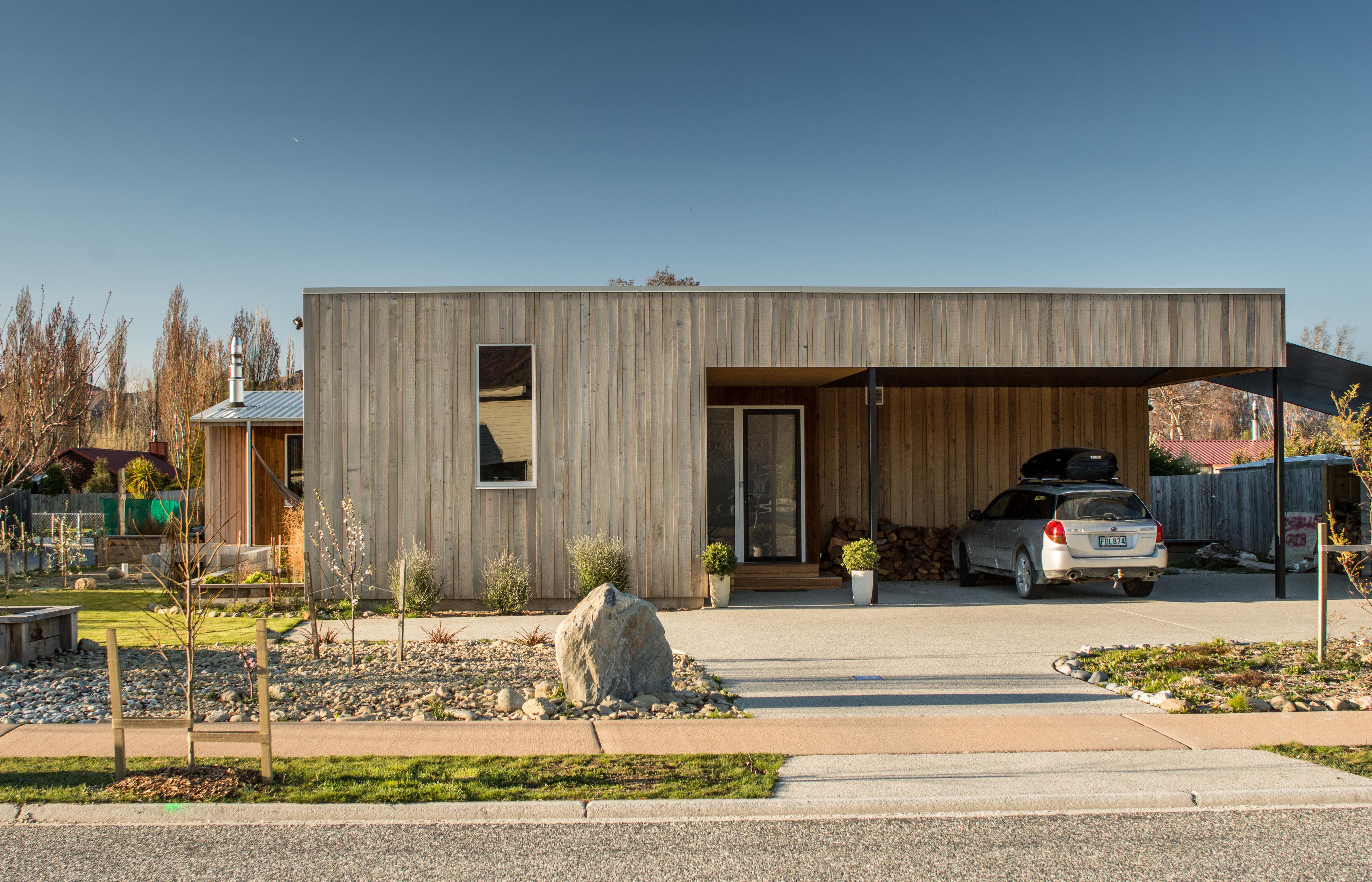
Location: Albert Town
Skip to galleryEnergy Efficient Family Home, Designed with Passive House Principles
This Wānaka home is a good case study of building a high performing, thermally efficient house on a budget – without skimping on good design. We rationalised the brief to reduce the area of the floor plan to improve energy efficiency without cutting down on the functional requirements of a family home. The reality of a Wanaka based family typically means a lot of seasonal gear to make the most of the outdoors – which translates to a lot of storage space.
Therein lay the challenge: create a well designed, efficient floor plan which provided as much useful space as possible, within smaller rooms than may be expected in a modern family home. This is especially evident in the use of carport and outdoor storage lockers. Reducing the floor plan is the obvious first step to cutting down on construction costs, energy costs, and therefore environmental impact.
Cutting down on quantity in some areas, meant investment into quality could be made where it counts. Thermal performance was key, with the use of Passive House principles to achieve airtight construction. SIPs Panels and thermally broken slabs do the majority of the work to ensure this home requires very little heating to maintain comfort. Concrete block walls are used as internal partitions within the thermal envelope only. This provides mass to regulate internal temperatures, without introducing thermal bridging to the cold outdoor air.
Warm and Inviting Interior Design
Not all the design thought was restricted to efficiency and budget however. Plenty of time was lent to the “design flair.” The home feels warm and inviting with ample natural timber ceilings and flooring running throughout the house. However, this flair wasn’t all extra cost. As noted by Homes to Love, the internal joinery provided elegant design, on a budget: “By using standard hardware and simple, robust materials like plywood and Formica HPL, custom-built vanities, wardrobes, TV room and living room shelving, a study desk, pantry and kitchen, were built – all for the same price as many spend on their kitchen alone.” A reminder that good design isn’t necessarily synonymous with high price tag.
The interior spaces are deceptive in their size – whilst they are compact in plan, they feel open and spacious with good natural light and outlook. This connectivity between indoor and outdoor is celebrated with the courtyard nature of the house, providing visual connection of all the rooms across the house. In addition to the courtyard, there are multiple outdoor spaces to suit varying seasons or times of the day.
You can read more about this SIPs home on the Chaney & Norman sustainable building blog and at Homes to Love.
Interested in sustainable architecture and energy efficient homes in New Zealand? Contact us today.
Gallery
Photographer: Daniel Allen
